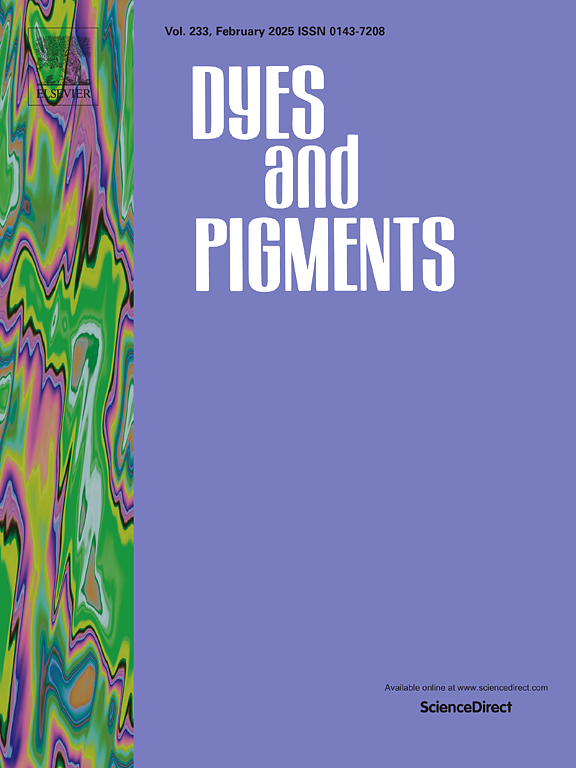Low-cost asymmetric structured hole transport material for perovskite solar cells
IF 4.1
3区 工程技术
Q2 CHEMISTRY, APPLIED
引用次数: 0
Abstract
Hole transport material (HTMs) is a key component for perovskite solar cells (PSCs) to achieve high photovoltaic performance and good long-term stability. In this study, we developed a series of efficient and cost-effective asymmetric small-molecule HTMs with 9-(4-methoxyphenyl)-9H-3,9′-bicarbazole (BCz) as the core unit, termed BCz-DM and BCz-NP. The design of asymmetric molecular chemical structure for these type HTMs raises up the dipole moment, which is beneficial for enhancing the intermolecular push-pull effect and rendering the HTM higher hole mobility. Moreover, combining with the π-conjugation expansion strategy, asymmetric HTM BCz-NP demonstrates compatible energy levels, along with superior hole mobility and conductivity. Consequently, the PSC device employing BCz-NP as HTM yields an impressive efficiency of 23.58 %, while the PCE of the reference device based on Spiro-OMeTAD is merely 22.77 %. Furthermore, BCz-NP based devices exhibit excellent stability, remaining 86 % of its initial PCEs after 1000 h aging test. These findings provided a promising approach for the improvement of photovoltaic performance for PSCs from the perspective of HTM design.

求助全文
约1分钟内获得全文
求助全文
来源期刊

Dyes and Pigments
工程技术-材料科学:纺织
CiteScore
8.20
自引率
13.30%
发文量
933
审稿时长
33 days
期刊介绍:
Dyes and Pigments covers the scientific and technical aspects of the chemistry and physics of dyes, pigments and their intermediates. Emphasis is placed on the properties of the colouring matters themselves rather than on their applications or the system in which they may be applied.
Thus the journal accepts research and review papers on the synthesis of dyes, pigments and intermediates, their physical or chemical properties, e.g. spectroscopic, surface, solution or solid state characteristics, the physical aspects of their preparation, e.g. precipitation, nucleation and growth, crystal formation, liquid crystalline characteristics, their photochemical, ecological or biological properties and the relationship between colour and chemical constitution. However, papers are considered which deal with the more fundamental aspects of colourant application and of the interactions of colourants with substrates or media.
The journal will interest a wide variety of workers in a range of disciplines whose work involves dyes, pigments and their intermediates, and provides a platform for investigators with common interests but diverse fields of activity such as cosmetics, reprographics, dye and pigment synthesis, medical research, polymers, etc.
 求助内容:
求助内容: 应助结果提醒方式:
应助结果提醒方式:


